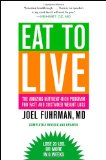I read an interesting article on the paradoxes involved in allocating seats for the Congress. The problem arises because of two rules: one congressperson has one vote, and the number of congresspeople per state should be proportional to the population of said state.
These two rules contradict each other, because it is unrealistic to expect to be able to equally divide the populations of different states. Therefore, two different congresspeople from two different states may represent different sizes of population.
Let me explain how seats are divided by using as an example a country with three states: New Nevada (NN), Massecticut (MC) and Califivenia (C5). Suppose the total number of congresspeople is ten. Also suppose the population distribution is such that the states should have the following number of congresspeople: NN — 3.33, MC — 3.34 and C5 — 3.33. As you know states generally do not send a third of a congressperson, so the situation is resolved using the Hamilton method. First, each state gets an integer portion of the seats. In my example, each state gets three seats. Next, if there are seats left they are allocated to states with the largest remainders. In my example, the remainders are 0.33, 0.34 and 0.33. As Massecticut has the largest reminder it gets the last seat.
This is not fair, because now each NN seat represents a larger population portion than each MC seat. Not only is this not fair, but it can also create some strange situations. Suppose there have been population changes for the next redistricting: NN — 3.0, MC — 3.4 and C5 — 3.6. In this case, NN and MC each get 3 seats, while C5 gets the extra seat for a total of 4. Even though MC tried very hard and succeeded in raising their portion of the population, they still lost a seat.
Is there any fair way to allocate seats? George Szpiro in his article suggests adding fractional congresspersons to the House of Representatives. So one state might have three representatives, but one of those has only a quarter of a vote. Thus, the state’s voting power becomes 2 1/4.
We can take this idea further. We can use the Hamilton method to decide the number of representatives per state, but give each congressperson a fractional voting power, so the voting power of each state exactly matches the population. This way we lose one of the rules that each congressperson has the same vote. But representation will be exact. In my first example, NN got three seats, when they really needed 3.33. So each congressperson from New Nevada will have 1.11 votes. On the other hand MC got four seats, when they needed 3.34. So each MC representative gets 0.835 votes.
Continuing with this idea, we do not need congresspeople from the same state to have the same power. We can give proportional voting power to a congressperson depending on the population in his/her district.
Or we can go all the way with this idea and lose the districts altogether, so that every congressperson’s voting power will be exactly proportionate to the number of citizens who voted for him/her. This way the voting power will reflect the popularity — rather than the size of the district — of each congressperson.
Share:






 I am reading the book
I am reading the book